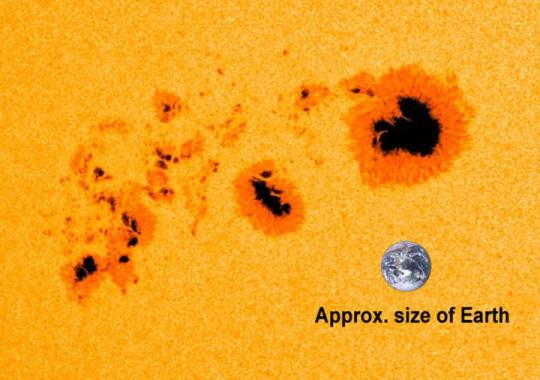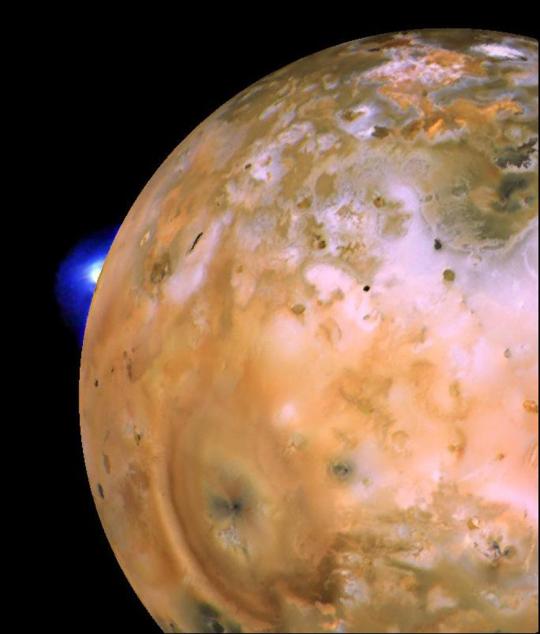Aspirations toward Mr.Spock-style logic/science/thought. A highly scientific-minded yet truly open-minded, out-of-the-box type thinker, while yet having no interest in conspiracy theories or anything paranoia-based. In addition to regular science, I also enjoy following fringe ideas such as cold fusion, the EM thruster, and related, although I strongly feel that all ideas must ultimately undergo strict scientific scrutiny before accepted as factual. My drive in life is to help push for humanity to move quickly and boldly into space along also with robotic development that will ultimately help toward bringing about a much happier future where people will no longer need to earn money/income in order to survive and be happy. OTHER WEBSITES: --Facebook: https://www.facebook.com/mark.ober.100 --Twitter: https://twitter.com/MarkEvanOber --Personal Website: http://TheRealityDreamscape.com
Don't wanna be here? Send us removal request.
Text
My results, which I suppose means I'm fairly creative:

9 notes
·
View notes
Text
2 notes
·
View notes
Video
tumblr
I just made this brand new video about 2 hours ago and again wanted to add my own voice-track to it and being that Oculus doesn’t include it, with my therefore doing so (which takes a LOT of work to do for FREE on my tablet using AudioRecorder, WavePad, and YouCut Apps rather than using a computer where I’d pay a lot for the software).
This shows a very brief visit into the VERY COOL AND HUGE “ISS Room” in the Multiverse Planetarium App on my Oculus Quest 2 device. The model overhead inside of this particular Room is HUGE and is of course of the ISS space station, which is probably a bit difficult to discern regarding its huge size via these 2D recorded videos. I had to make this video very quickly because I wanted it to be in MOV format instead of MP4 made by Oculus, which to convert for FREE via ‘zamzar.com’ requires it to be kept under 50 MB, which is about 1:45 (1 min and 45 secs) maximum in time. Someday when I’m made of money, then I can finally instead buy software for my computer that will make it MUCH easier and without size restrictions (except that Tumbler restricts videos to 100MB, which is about 3 minutes and 30 seconds for MP4 files I believe) so that I won’t have to continue using the difficult but free Apps on my tablet to add my voice into it (until hopefully someday they FIX the stupid problem in the device in that it picks up everything BUT your own voice!!!).
90 notes
·
View notes
Video
tumblr
This is my very FIRST Oculus Quest 2 video that I’ve made, but THIS time converted into MOV format to see if this allows it to be heard by Iphone users viewing it through a RE-post to Facebook as well, with some saying they couldn’t hear the MP4 version of it from there.
1 note
·
View note
Video
tumblr
A clip from my visit to the Multiverse App inside of Oculus Quest 2.
0 notes
Video
tumblr
This is another video I just made of being inside of my new Oculus Quest 2 device. In this one, I just wanted to show how interesting the LIVE version is of my avatar that I just made yesterday. Notice that it both blinks and has odd smiles and that its eyes do NOT follow you. Its head, however, truly does match however my head is positioned at the time. But it really does overall look kind of eerie. :)
I had to post this HERE and then refer to it here from in Facebook in order to be able to view it Facebook, which is really ridiculous!
2 notes
·
View notes
Text
TUMBLR WASN’T EVEN ALLOWING ME TO APPEAL THIS REPOST, WITH IT ORIGINALLY CLAIMING THAT IT HAS ADULT CONTENT IN IT WHEN ALL THAT IT SHOWS IS CATS...AS A REPOST FROM SOMEONE ELSE! (But now that I added the above text into it, it FINALLY allowed it it seems!!!).

1 note
·
View note
Link
0 notes
Video
tumblr
My starting experience with inside of the cool new Oculus Quest 2 inside of the Home Environment.
0 notes
Photo
Cool, but it makes me hungry. :)

Hubble Captures Cosmic Cinnamon Bun
Observed with the NASA/ESA Hubble Space Telescope, the faint galaxy featured in this image is known as UGC 12588. Unlike many spiral galaxies, UGC 12588 displays neither a bar of stars across its center nor the classic prominent spiral arm pattern. Instead, to a viewer, its circular, white and mostly unstructured center makes this galaxy more reminiscent of a cinnamon bun than a megastructure of stars and gas in space.
Lying in the constellation of Andromeda in the Northern Hemisphere, this galaxy is classified as a spiral galaxy. Unlike the classic image of a spiral galaxy, however, the huge arms of stars and gas in UGC 12588 are very faint, undistinguished, and tightly wound around its center. The clearest view of the spiral arms comes from the bluer stars sprinkled around the edges of the galaxy that highlight the regions where new star formation is most likely taking place.
Source: NASA
230 notes
·
View notes
Photo
Cool! Except that I wouldn’t really be feeling very safe at this point. NICE kitty kitty. Seriously...what else could you do but to TRY somehow to calm it down and change it’s mind from attacking and eating you (assuming that you have no weapons of any kind with you nor places to escape to). Maybe if you started singing something pleasant to it, it might serve as enough of a distraction to eventually result in a safe extraction somehow. LOL

38 notes
·
View notes
Photo
HEY!!! Being that the Earth can obviously fit into at least one of those Sunspots shown, HOW FUN would it be to do that! So LET’S GO! Let’s move the Earth into that Sunspot, DUDE!!! Let’s DO it!!! LOL...j/k :)

A new look at sunspots
Helping NASA scientists understand major flares and life around other stars
NASA’s extensive fleet of spacecraft allows scientists to study the Sun extremely close-up - one of the agency’s spacecraft is even on its way to fly through the Sun’s outer atmosphere. But sometimes taking a step back can provide new insight.
In a new study, scientists looked at sunspots - darkened patches on the Sun caused by its magnetic field - at low resolution as if they were trillions of miles away. What resulted was a simulated view of distant stars, which can help us understand stellar activity and the conditions for life on planets orbiting other stars.
“We wanted to know what a sunspot region would look like if we couldn’t resolve it in an image,” said Shin Toriumi, lead author on the new study and scientist at ?the Institute of Space and Astronautical Science at JAXA. “So, we used the solar data as if it came from a distant star to have a better connection between solar physics and stellar physics.”
Sunspots are often precursors to solar flares - intense outbursts of energy from the surface of the Sun - so monitoring sunspots is important to understanding why and how flares occur. Additionally, understanding the frequency of flares on other stars is one of the keys to understanding their chance of harboring life. Having a few flares may help build up complex molecules like RNA and DNA from simpler building blocks. But too many strong flares can strip entire atmospheres, rendering a planet uninhabitable.
To see what a sunspot and its effect on the solar atmosphere would look like on a distant star, the scientists started with high-resolution data of the Sun from NASA’s Solar Dynamics Observatory and JAXA/NASA’s Hinode mission. By adding up all the light in each image, the scientists converted the high-resolution images into single datapoints.
Stringing subsequent datapoints together, the scientists created plots of how the light changed as the sunspot passed across the Sun’s rotating face. These plots, which scientists call light curves, showed what a passing sunspot on the Sun would look like if it were many light-years away.
“The Sun is our closest star. Using solar observing satellites, we can resolve signatures on the surface 100 miles wide,” said Vladimir Airapetian, co-author on the new study and astrophysicist at NASA’s Goddard Space Flight Center in Greenbelt, Maryland. “On other stars you might only get one pixel showing the entire surface, so we wanted to create a template to decode activity on other stars.”
The new study, published in the Astrophysical Journal, looked at simple cases where there is just one group of sunspots visible across the entire face of the Sun. Even though NASA and JAXA missions have continually gathered observations of the Sun for over a decade, these cases are quite rare. Usually there are either several sunspots - such as during the solar maximum, which we are now moving toward - or none at all. In all the years of data, the scientists only found a handful of instances of just one isolated sunspot group.
Studying these events, the scientists found the light curves differed when they measured different wavelengths. In visible light, when a singular sunspot appears at the center of the Sun, the Sun is dimmer.
However, when the sunspot group is near the edge of the Sun, it’s actually brighter due to faculae - bright magnetic features around sunspots - because, near the edge, the hot walls of their nearly vertical magnetic fields become increasingly visible.
The scientists also looked at the light curves in x-ray and ultraviolet light, which show the atmosphere above the sunspots. As the atmospheres above sunspots are magnetically heated, the scientists found brightening there at some wavelengths. However, the scientists also unexpectedly discovered that the heating could also cause a dimming in the light coming from the lower temperature atmosphere. These findings may provide a tool to diagnose the environments of spots on the stars.
“So far we’ve done the best-case scenarios, where there’s only one sunspot visible,” Toriumi said. “Next we are planning on doing some numerical modeling to understand what happens if we have multiple sunspots.”
By studying stellar activity on young stars in particular, scientists can glean a view of what our young Sun may have been like. This will help scientists understand how the young Sun - which was overall more dim but active - impacted Venus, Earth and Mars in their early days. It could also help explain why life on Earth started four billion years ago, which some scientists speculate is linked to intense solar activity.
Studying young stars can also contribute to scientists’ understanding of what triggers superflares - those that are 10 to 1000 times stronger than the biggest seen on the Sun in recent decades. Young stars are typically more active, with superflares happening almost daily. Whereas, on our more mature Sun, they may only occur once in a thousand years or so.
Spotting young suns that that are conducive to supporting habitable planets, helps scientists who focus on astrobiology, the study of the origin evolution, and distribution of life in the universe. Several next generation telescopes in production, which will be able to observe other stars in x-ray and ultraviolet wavelengths, could use the new results to decode observations of distant stars.
In turn, this will help identify those stars with appropriate levels of stellar activity for life - and that can then be followed up by observations from other upcoming high-resolution missions, such as NASA’s James Webb Space Telescope.
IMAGE….One of the largest sunspots seen in early January 2014, as captured by NASA’s Solar Dynamics Observatory. An image of Earth has been added for scale. CREDIT NASA/SDO
303 notes
·
View notes
Photo
Pretty area

Banff Alberta Canada
© Merve Cevik
8K notes
·
View notes
Photo
Cool!

VOLCANISM ON IO Io, the innermost of Jupiter’s four Galilean moons, was discovered by Galileo Galilei on January 8, 1610. The first reported observation of Io was actually on January 7, but at that time Galileo observed Io and Europa as a single point of light. It wasn’t until the following day that he realized he had actually discovered two moons, not just one.
Keep reading
36 notes
·
View notes

